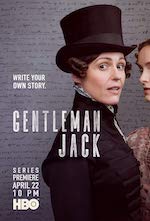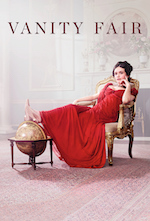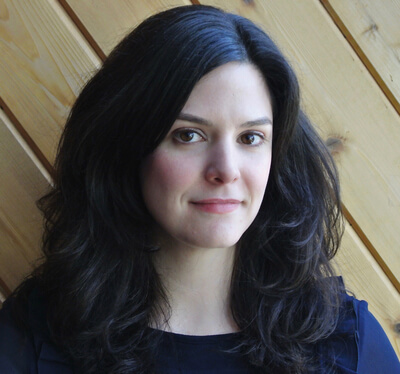In Sarah Sentilles’ memoir Stranger Care, she writes beautifully about risking love, vulnerability and loss by becoming a foster parent. With the same care and attention, she shares how to tend your creativity and help it feel safe enough to flourish.
1. Set an intention
Before I begin a new writing project, I set an intention. My intention for Stranger Care was to write a love letter to our foster daughter, Coco, that would mother her when I’m no longer allowed to. I wanted to write a book that would help create a world where she’ll be safe and loved, no matter where she lands. Whenever I got scared while writing, whenever I wondered, What am I doing? What difference does it make?, I returned to my intention. And it grounded me, kept me going.
I learned this practice from my friend and teacher Juliana Jones-Munson. The intention should be personal and healing, she told me, not external or dependent on other people. Your intention should remind you why you write, and it should be powerful enough that everything else—what critics say, whether you sell it—pales in comparison.
2. Welcome first thoughts
During a writing workshop I took with Nick Flynn through Tin House, Nick had us do timed, constraint-based writing exercises by hand. This helped me learn to welcome first thoughts, my initial ideas, and helped me practice trusting myself. I took another workshop with Carolyn Forché, who was Nick’s teacher, too, and in that workshop at the Hedgebrook writing retreat center, she taught me to embrace generative writing.
Before that, I was an incessant reviser. I’d get stuck on the first paragraph or the first few pages of my manuscript, and every day I sat down to write, I would rework those. But Carolyn said, “Don’t revise. Don’t go back. Go forward.” She told me to write for three hours a day, to write whatever came to my mind. It didn’t matter. Just keep writing. And her directions unleashed a torrent of words.
Now when I start a new project, I write for three hours every day, for weeks and weeks and weeks. Only after that kind of generative writing do I begin to understand what I might be working on. And only then do my ideas begin to trust me to write them. Only then do they show themselves. I picture my ideas huddled in a cave in the back of my mind, and they send out scouts to see what will happen. “Let’s see how she treats this idea,” they whisper to one another, and then they push one forward. “Will she bludgeon it? Call it stupid? Think it’s garbage? Or will she write it down, put it on the page, tend it?” Your creativity is watching how you treat your ideas. It will only send more when it seems safe.
ALSO IN BOOKPAGE: Read our starred review of Stranger Care.
3. Be a magpie
When you’re working on something, whether it’s a memoir or a novel or a painting, act like a magpie and collect everything that shines. Or, to use another bird metaphor, be a bowerbird. Collect whatever helps you build a structure that will draw some future reader to you. In The Creative Habit, Twyla Tharp calls this “scratching.” She writes, “I’m digging through everything to find something. It’s like clawing at the side of the mountain to get a toehold, a grip, some sort of traction to keep moving upward and onward.”
Write down the lyric you can’t get out of your head. Take notes about the story you heard on the radio that you can’t stop thinking about. Collect the poems that make you cry. Everything is connected to what you’re working on, even if it seems unconnected. If you find yourself drawn to an article about whale song, write about it. If you keep thinking about the fact that birds are dinosaurs, write about it. One writer I work with told me her story was getting cramped, as if her writing room were shrinking, but when she gave herself permission to invite other ideas into her writing—how clouds form, the history of rice, how a bud knows when to bloom—she felt like she’d opened a window and let the world in.
4. Writing is the remedy
My saboteur, the voice that tries to stop me from writing, is a wily shape-shifter. My saboteur will say anything to keep me away from the page—that I’m a fraud, that people will hate me if I write this book or that essay, that I’m wasting my time, that my ideas are boring and derivative. I’m writing fiction now, so my saboteur sounds different than she does when I’m writing nonfiction. She’s taking a new approach, insisting the plot idea I have is too dramatic, over the top, dumb. You don’t know what you’re doing, she says to me every morning when I sit down to write. Who do you think you are? But as soon as I recognize that voice for what it is, her power evaporates. As soon as I start to write, she’s gone. And the more regular my writing practice is, the quieter that sabotaging voice is. Not writing gives my saboteur an opening, but all I need to do to close that door is touch the page.
“Your creativity is watching how you treat your ideas. It will only send more when it seems safe.”
5. You don’t know what you’re writing until you have a draft
You can’t know what’s garbage and what’s gold until you’ve written your way through a draft. You can’t know what belongs in a project and what doesn’t in the beginning either, because you don’t know what you’re writing yet. Be patient. Hold your story loosely. Wait for it to show you what it wants to be. Listen. Write down all your ideas. Save everything, all your strange little fragments and scenes. Editing won’t happen until later.
So many of my writing clients say they aren’t sure what they’re writing yet, but can I help them find an agent? This, too, is putting the cart before the horse. How can you find the right agent for your book if it isn’t written yet? For me, the goal is to write the best possible book you can write and then assemble the team that understands what you’re trying to do and can help you do it better. I’ve worked with so many people who sold a book proposal for one kind of book only to realize they were actually writing a very different book. They weren’t writing a commercial self-help book at all; they were writing an intimate memoir about their childhood. They weren’t writing a memoir; they were writing a page turner of a thriller. But they’re stuck with a team who wants the book they proposed, not this other thing that their art has become. Let your art lead the way. Wait for it. The timing will be right and perfect.
6. Keep your writing to yourself
When I first started writing, I wanted to show everyone every new thing I wrote, like right away. I’d write a paragraph and show it to someone, anyone, to see what they liked and what they hated. But now I don’t show anyone what I’m writing until I’ve taken it as far as I can on my own, which sometimes means I don’t show anyone my writing for years. And then, when I think it might be ready, I show my agent, Molly Friedrich. And that’s pretty much it until we think the book is ready to be sold.
At its heart, writing means learning to listen for your voice—or for the voice that wants to come through you. That voice is hard to hear when you’re letting other readers and critics chime in all the time. Be monogamous with your writing. Keep it to yourself.
“Our ideas come from deep within, and they come from the stars. Treat these visitors with love.”
7. Your story chose you
It occurred to me recently that when we worry our story idea isn’t good enough, it’s disrespectful to the idea. Thinking we’re not good enough to write it is also impolite. Our ideas come from deep within, and they come from the stars. Treat these visitors with love. Tend them.
Draw Your Weapons took me 10 years to write, and during one of those years, I complained to a friend, the writer Alice Dark, about how sick I was of working on that project, how ready I was to be done with it. “Sometimes we have to become the person our book needs us to be before we can finish it,” she said. Sometimes that becoming happens fast. Sometimes it takes a long time. But your story idea chose you. (Elizabeth Gilbert writes powerfully about this in Big Magic.) That idea knows you have everything you need to become the writer it needs.
8. Write first thing
 I do my best writing in the morning, first thing. I don’t check my email or social media, and I don’t look at the news until I’ve done my writing. Sometimes I “forget” and check my phone when I’m still in bed, and on those days, I might as well put my brain in a barrel and light it on fire.
I do my best writing in the morning, first thing. I don’t check my email or social media, and I don’t look at the news until I’ve done my writing. Sometimes I “forget” and check my phone when I’m still in bed, and on those days, I might as well put my brain in a barrel and light it on fire.
In Deep Work, Cal Newport makes a compelling argument about the need for undistracted, focused time for thinking and writing and problem-solving. It doesn’t happen when we multitask, or check email, or look at Instagram or Facebook or Twitter or whatever social media platform sucks up your time. I’m addicted to this stuff, and I know it impedes my creativity. When I step away from this never-ending stream of distraction, I can feel my mind reset. I can feel my internal emotional life settle. My thoughts and my time belong to me again.
Writing first thing is also connected to boundary-setting. We tend to think of boundaries as selfish, but really they’re generous. When you close your studio door or say no to an obligation or block out time for your art, you give other people permission to protect their time and space to follow their creative dreams. And if you’re a parent, your boundaries give your children the freedom to set boundaries, too. It shows them they can protect what’s important to them.
9. To turn toward your writing is to turn toward the world—and change it
I’ve spent a lot of time and energy believing that if I pay attention to what’s happening in the world, my attention can somehow make terrible things not happen. But it turns out I don’t have much control over what politicians do. Or corporations. Or governments. Or viruses. Or courts. But I do have control over what I write and dream and imagine. I have control over what kinds of activism and resistance I engage in. And I have control over where I put my energy. I can choose to put my creativity toward the kind of world I want to help bring into being.
So, experiment. Stay away from the news and see what happens when you don’t absorb all that panic and fear. I’m not saying don’t pay attention at all—but I am saying choose a different kind of attention. In A Swim in the Pond in the Rain, George Saunders writes that the aim of art is to ask big questions:
How are we supposed to be living down here? What were we put here to accomplish? What should we value? What is truth, anyway, and how might we recognize it? How can we feel at peace when some people have everything and others have nothing? How are we supposed to live with joy in a world that seems to want us to love other people but then roughly separates us from them in the end, no matter what?
“It turns out I don’t have much control over what politicians do. . . . But I do have control over what I write and dream and imagine.”
To write well is to care for the world and the beings we share it with. To write well is to learn to live in the world in more just and life-giving ways. Matthew Salesses puts it another way in Craft in the Real World. “Craft is never neutral,” he writes. “Craft is the cure or injury that can be done in our shared world when it isn’t acknowledged that there are different ways that world is felt.” He continues, “Craft is support for a certain worldview. . . . Revision must also be the revision of craft. To be a writer is to wield and be wielded by culture.” Writing is political work.
10. Write through the hard stuff, even while it’s happening
When it became clear that our foster daughter Coco would be reunified with her biological mother, and when we’d have hard days in court or with the social worker or just walking around with our broken hearts, my husband, Eric, would look at me and my puffy eyes and say, “Go write.”
“I can’t,” I’d say.
“Go write,” he’d say again and point to my desk. I’m grateful to him. I’m grateful for those raw pages. I wrote Stranger Care in real time, and working on it brought Coco close, even when she wasn’t. I felt so helpless—I feel helpless still—but I find some agency in arranging words on a page, even when those words are, “She is gone.”
11. Your project is well supported
We don’t write alone. We write for the generations who came before us, and we write for the generations who will follow. One of the women who participated in the WORD CAVE, a four-day virtual writing retreat I offer, told me, “I write because my grandmother couldn’t.” What more powerful reason could there be?
Read our starred review of Stranger Care here.



















 I do my best writing in the morning, first thing. I don’t check my email or social media, and I don’t look at the news until I’ve done my writing. Sometimes I “forget” and check my phone when I’m still in bed, and on those days, I might as well put my brain in a barrel and light it on fire.
I do my best writing in the morning, first thing. I don’t check my email or social media, and I don’t look at the news until I’ve done my writing. Sometimes I “forget” and check my phone when I’m still in bed, and on those days, I might as well put my brain in a barrel and light it on fire.